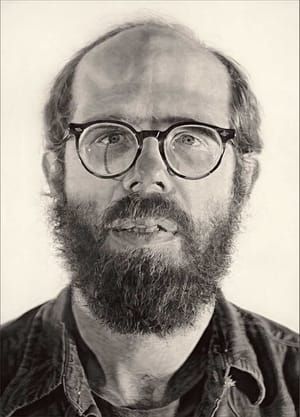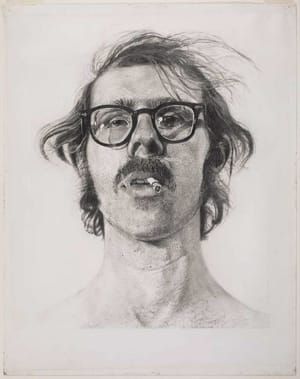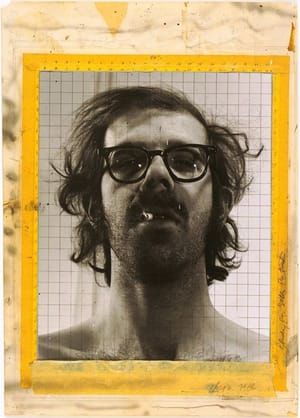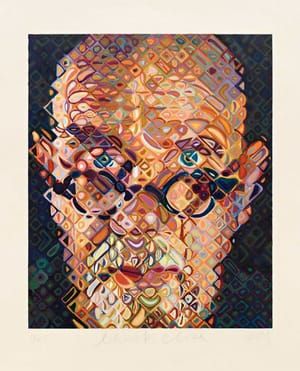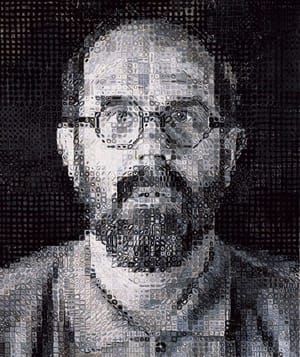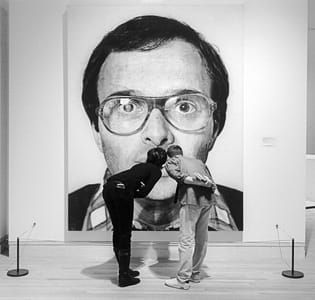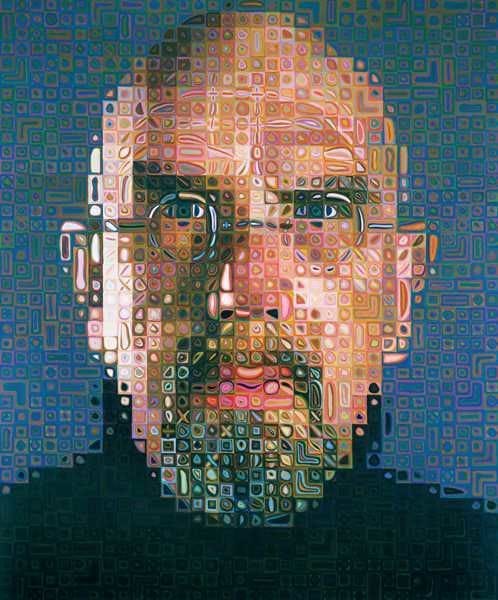

Self Portrait
Chuck Close
102x86 in.
Chuck Close is a modern American artist who has achieved international recognition for his large scale portraits. He was instrumental in reviving the art of portraiture as a credible subject matter at a time when figurative art looked dead in the water.
[http://www.artyfactory.com/art_appreciation/portraits/chuck_close.html]
....In 1968, Close completed the watershed painting Big Self-Portrait, his first self-portrait and the first of a group of eight black and white “heads,” as he refers to them, which included portraits of fellow artists Nancy Graves, Richard Serra, Joe Zucker, and the composer Philip Glass. At the monumental scale of nine by seven feet, Big Self-Portrait is made from only a few tablespoons of water-based pigment, applied thinly so as to imitate the slick surface of its photographic source. It was this series of paintings that brought Close instant recognition as an artist, and set the course for a working method the artist has continued to the present.
Always working from photographs as the basis for his imagery, Close first produces a maquette, comprising a photograph overlaid with a grid template. He then proceeds to systematically transpose the image to another surface—be it canvas, drawing paper, a printing plate, or a paper pulp collage—square by square. Though his practice is well-defined, it is far from rigid. Within each square, Close has chosen, as he has remarked, to consistently “alter the variables” in his work. Whether he fills each square with delicately airbrushed pigment, dots of pastel, inked fingerprints, etched lines, or organic brushstrokes in vibrant color, he continues “to find things in the rectangle and slowly sneak up on what I want . . . to make it all happen in the rectangle instead of on the palette and in context.” Within the broad array of self-portraits featured in this exhibition, Close has used this method to produce works ranging from large-scale paintings to intimate drawings to elaborate paper pulp constructions. He is also a master printmaker, and has created self-portraits using techniques including etching, woodcut, linoleum block printing, and screenprinting.
Close has also been an innovator in the arena of photography, and the exhibition will contain numerous examples of his photographic self-portraits. One of the first artists to experiment with the large-format Polaroid camera, he has created many portraits in the medium, including large-scale collages of multiple photographs. In recent years, he has also embraced the 19th-century daguerreotype technique, which he has used to create a broad range of portraits—many of his own image—that feel exceptionally contemporary.
Beginning in 1988, Close faced new personal and artistic challenges after suffering a collapsed spinal artery that initially left him paralyzed from the neck down. With time and tenacity, his condition improved, and though dependent on a wheelchair, he was able to begin painting again with a customized brace. The self-portraits made following this event became more gestural than ever before, and continued Close’s explorations into the use of a bold, unexpected color palette. Close is a highly intuitive colorist, whose paintings have been connected to many art historical precedents, including Byzantine mosaics and the paintings of Gustav Klimt.
[https://walkerart.org/press-releases/2005/walker-art-center-premieres-exhibition-of-chu]
Uploaded on Feb 5, 2018 by Suzan Hamer
Chuck Close
artistArthur
coming soon
